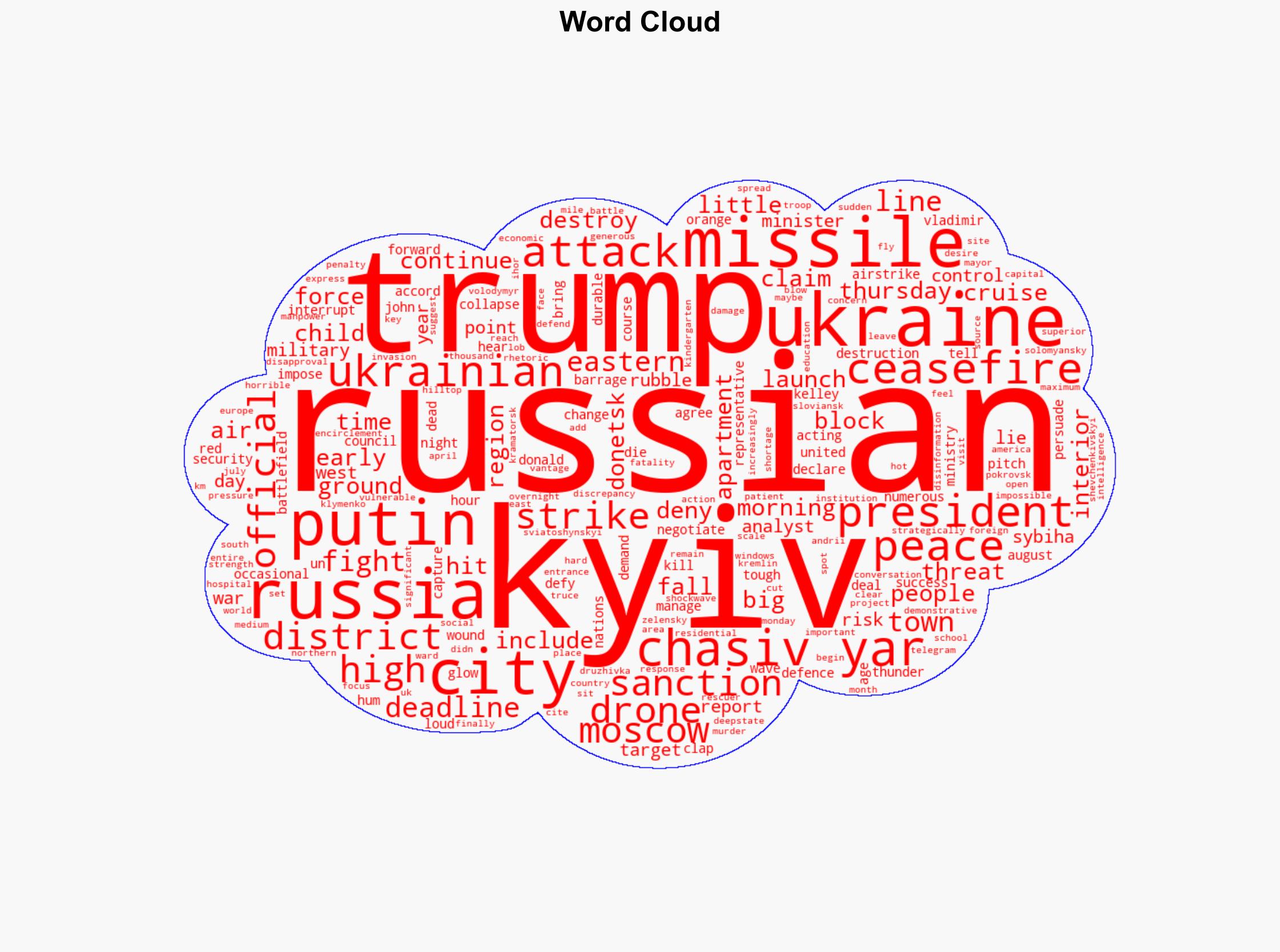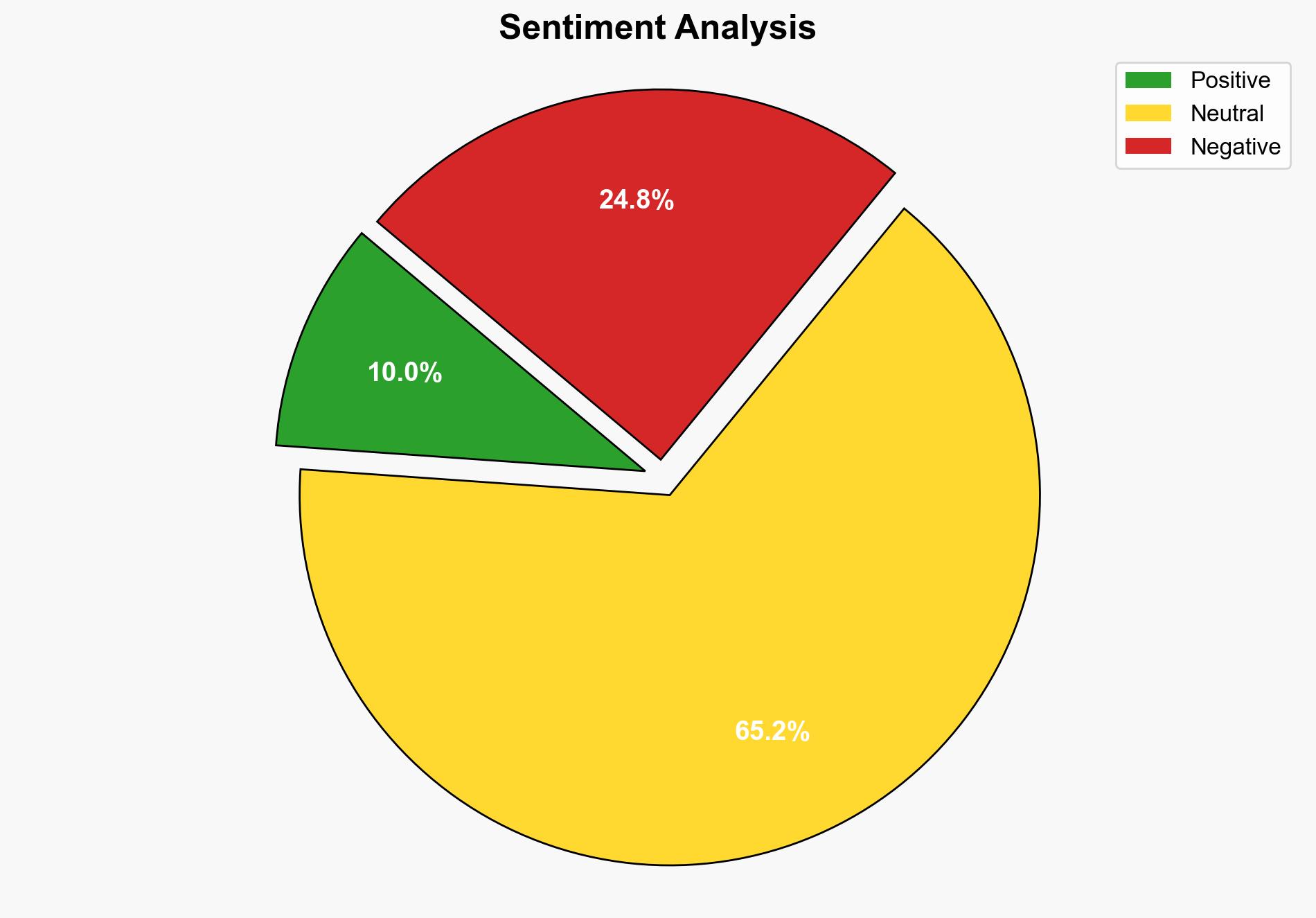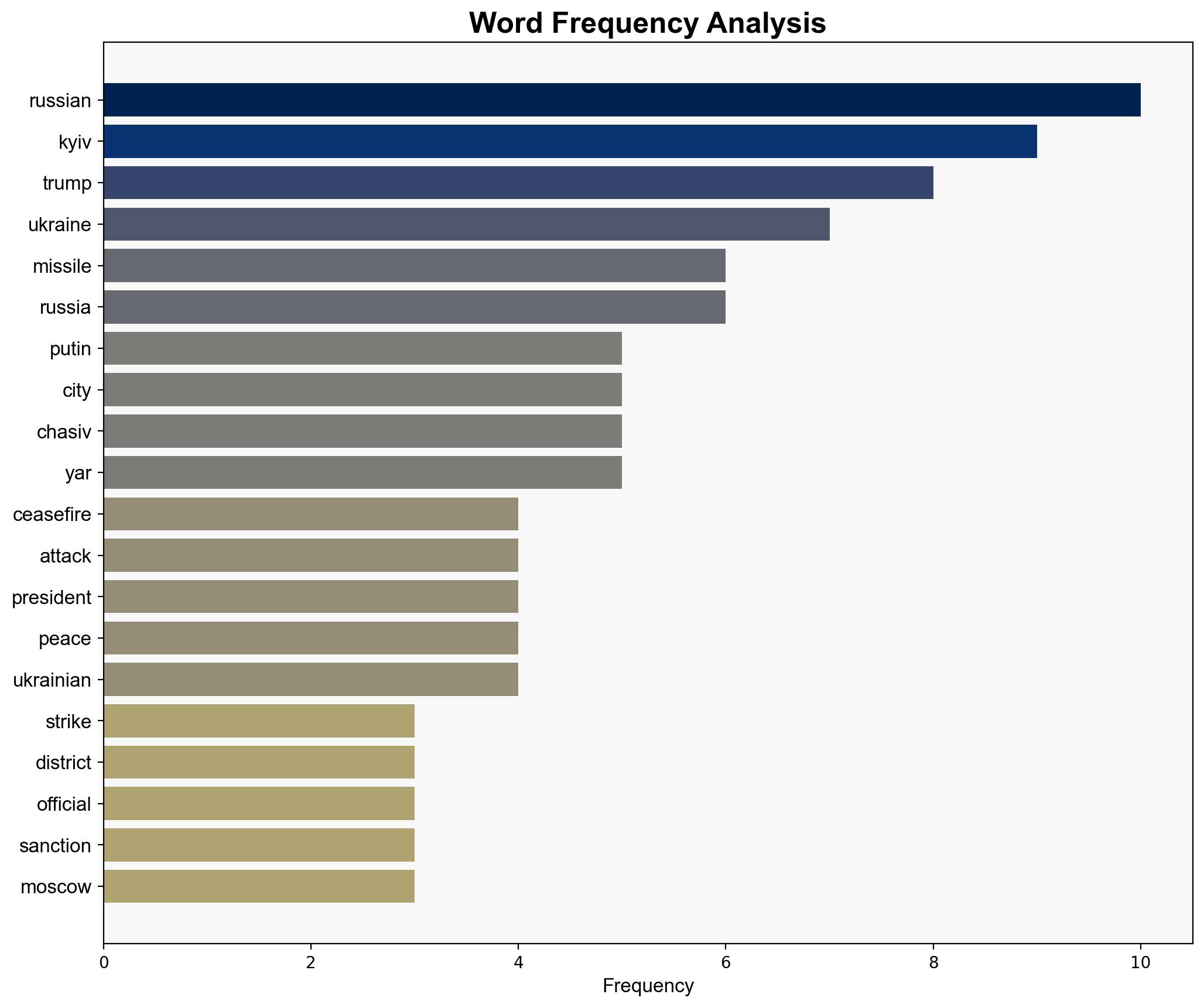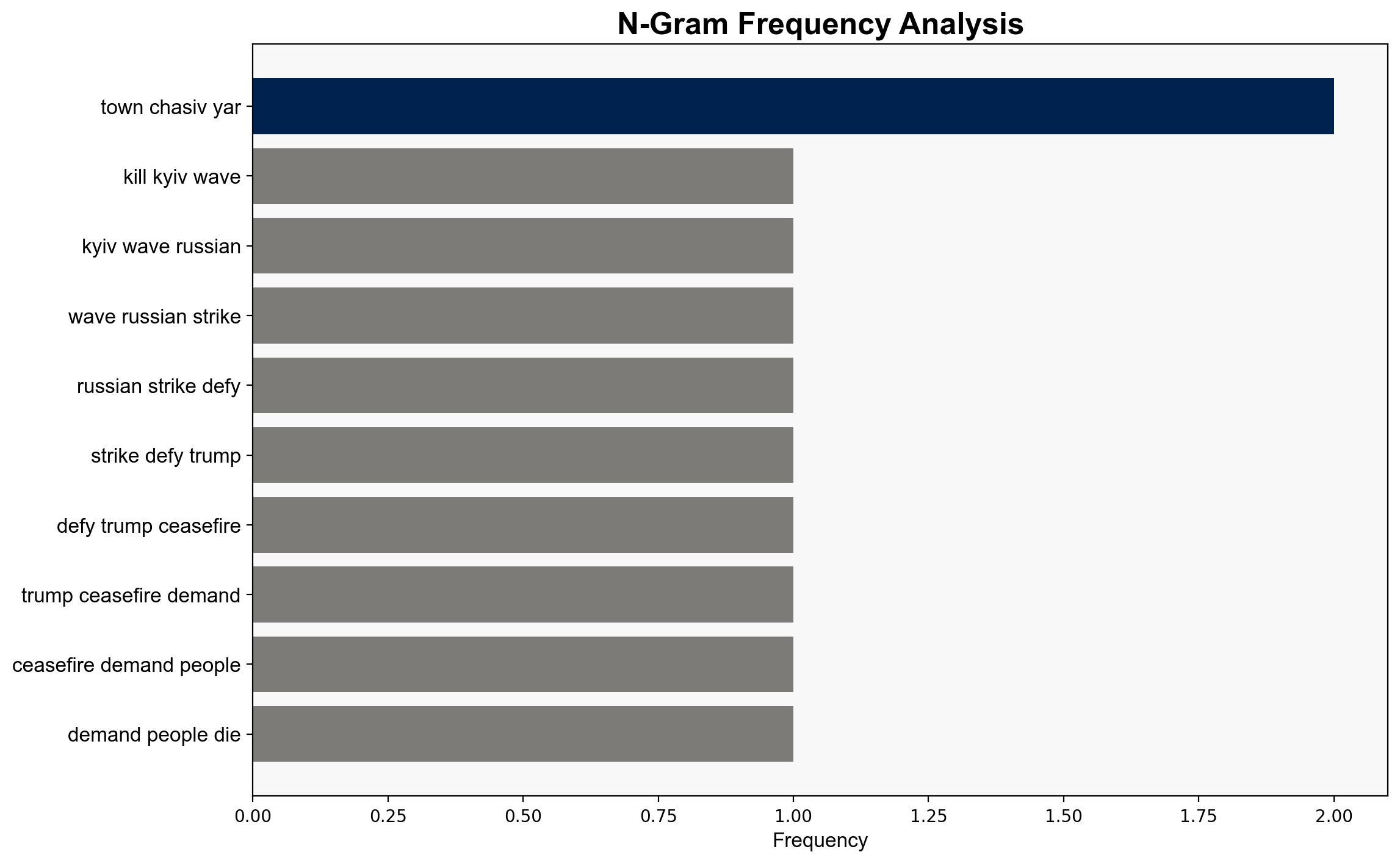Russian strikes on Kyiv kill six and injure more than 50 Ukrainian officials say – BBC News
Published on: 2025-07-31
Intelligence Report: Russian strikes on Kyiv kill six and injure more than 50 Ukrainian officials say – BBC News
1. BLUF (Bottom Line Up Front)
The most supported hypothesis is that Russia’s continued strikes on Kyiv are a strategic move to undermine Ukrainian morale and test international resolve, rather than a direct response to external pressures such as sanctions or ceasefire demands. Confidence level: Moderate. Recommended action: Increase diplomatic efforts to strengthen international coalitions against Russian aggression and enhance defensive capabilities in Ukraine.
2. Competing Hypotheses
1. **Hypothesis A**: Russia’s strikes on Kyiv are primarily a response to the failure of diplomatic negotiations and external pressures, such as sanctions and ceasefire demands, indicating a strategic pivot to military escalation.
2. **Hypothesis B**: The strikes are part of a broader strategy to maintain pressure on Ukraine, disrupt its governance, and test the resolve of the international community, independent of immediate diplomatic developments.
Using the Analysis of Competing Hypotheses (ACH) 2.0, Hypothesis B is better supported. The continued military actions despite diplomatic overtures and sanctions suggest a long-term strategy rather than a reactionary measure.
3. Key Assumptions and Red Flags
– **Assumptions**: It is assumed that Russia’s military actions are directly influenced by diplomatic negotiations and sanctions. This may overlook internal Russian strategic objectives.
– **Red Flags**: The discrepancy between Russian claims of battlefield success and Ukrainian denials suggests potential misinformation. The timing of the strikes coinciding with diplomatic deadlines raises questions about their true intent.
– **Blind Spots**: Limited visibility into internal Russian decision-making processes and potential over-reliance on Ukrainian sources for battlefield reports.
4. Implications and Strategic Risks
– **Escalation Risks**: Continued strikes could lead to broader regional instability and increased military engagements.
– **Economic Impacts**: Prolonged conflict may strain Ukrainian and regional economies, affecting global markets.
– **Geopolitical Dynamics**: The situation could polarize international alliances, with increased pressure on NATO and EU countries to respond.
– **Psychological Effects**: Sustained attacks on civilian areas may erode public morale in Ukraine and impact international public opinion.
5. Recommendations and Outlook
- Enhance intelligence-sharing among allies to better anticipate Russian military actions.
- Strengthen defensive measures in Ukraine, focusing on missile defense and civilian protection.
- Increase diplomatic pressure on Russia through coordinated international sanctions and public diplomacy.
- Scenario Projections:
- Best Case: Successful diplomatic intervention leads to a ceasefire and de-escalation.
- Worst Case: Escalation into broader regional conflict involving neighboring countries.
- Most Likely: Continued low-intensity conflict with periodic escalations and international diplomatic efforts.
6. Key Individuals and Entities
– Vladimir Putin
– Donald Trump
– Volodymyr Zelensky
– Ihor Klymenko
– Andrii Sybiha
– John Kelley
7. Thematic Tags
national security threats, cybersecurity, counter-terrorism, regional focus





